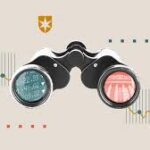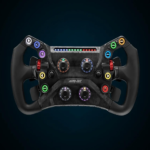
In the modern age of technology and constant connectivity, the prevalence of screens has become an integral part of our daily lives. Whether it’s our smartphones, tablets, computers, or televisions, we are immersed in a world where blue light emanates from almost every device. While this light serves its purpose in illuminating our digital experiences, there’s a growing concern about its potential effects on our health and well-being. Welcome to the realm of the “Special Blue Light.”
Unveiling the Blue Light Spectrum
To understand the phenomenon, we must delve into the science behind it. Blue light is a high-energy, short-wavelength light on the visible spectrum, typically ranging from 380 to 500 nanometers. It’s omnipresent in our environment, with natural sources like the sun and artificial sources like LED lighting and electronic screens.
The Digital Age Dilemma
The advent of digital screens has significantly increased our exposure. Whether it’s scrolling through social media, binge-watching our favorite shows, or working late hours, we subject ourselves to prolonged periods of blue light exposure. Smartphones, tablets, computers, and even energy-efficient LED lighting emit significant amounts of blue light, altering our natural circadian rhythms and potentially impacting our health.
The Impact on Sleep Cycles
One of the most well-documented effects exposure is its interference with our sleep patterns. Blue light suppresses the production of melatonin, a hormone responsible for regulating our sleep-wake cycles. Excessive exposure to blue light, particularly in the evening and nighttime hours, can disrupt our circadian rhythms, leading to difficulties falling asleep and poorer sleep quality. This disruption not only affects our immediate well-being but can also have long-term implications for our overall health.
Eye Strain and Digital Eye Fatigue
Beyond its effects on sleep exposure is also associated with digital eye strain and fatigue. Prolonged screen time can lead to symptoms like dry eyes, headaches, blurred vision, and neck and shoulder pain, collectively known as Computer Vision Syndrome (CVS). Blue light, with its shorter wavelengths and higher energy, scatters more easily than other visible light, contributing to glare and visual discomfort, particularly during extended screen use.
Potential Long-Term Health Concerns
While research on the long-term health effects is ongoing, some studies suggest potential links to more serious conditions. Chronic blue light exposure has been associated with an increased risk of age-related macular degeneration (AMD), a leading cause of vision loss in older adults. Additionally, there are concerns about potential role in exacerbating certain retinal diseases and contributing to digital-related myopia (nearsightedness) in children and adolescents.
Mitigating the Risks: Practical Solutions
Despite the potential risks associated with blue light exposure, there are practical steps we can take to mitigate its impact on our health:
- Limit Screen Time: Implementing screen time limits, particularly in the evening, can reduce exposure to blue light and promote better sleep hygiene.
- Use Blue Light Filters: Many devices and operating systems offer built-in blue light filters or “night mode” settings that reduce blue light emission during nighttime hours. Additionally, specialized blue light-filtering glasses can be worn to minimize exposure during screen use.
- Take Regular Breaks: Incorporating frequent breaks into screen-based activities can help alleviate digital eye strain and fatigue. The 20-20-20 rule—taking a 20-second break to look at something 20 feet away every 20 minutes—can be particularly beneficial.
- Optimize Lighting: Adjusting the lighting in our environments, such as using warmer, less intense lighting in the evening and ensuring adequate natural light exposure during the day, can help regulate our circadian rhythms and reduce reliance on artificial blue light sources.
Conclusion
The Blue Light Special is a double-edged sword of modern technology, offering illumination and connectivity while also posing potential risks to our health and well-being. As we navigate the digital age, it’s essential to strike a balance between leveraging technology’s benefits and safeguarding ourselves against its potential pitfalls. By understanding the effects of blue light and adopting practical strategies to mitigate its impact, we can strive for a healthier and more harmonious relationship with the digital world.









